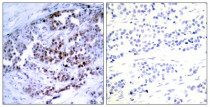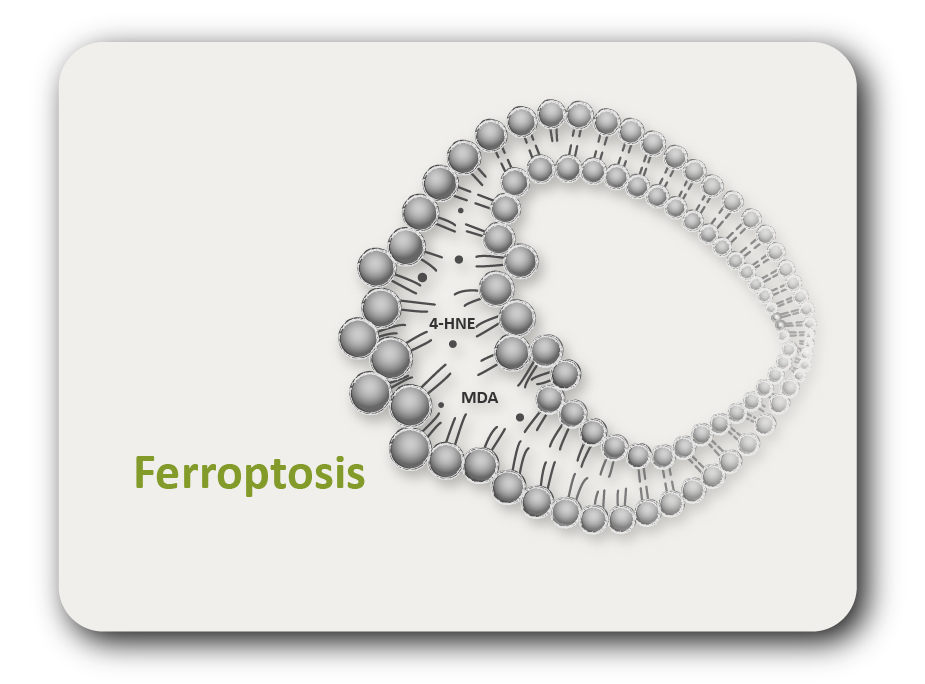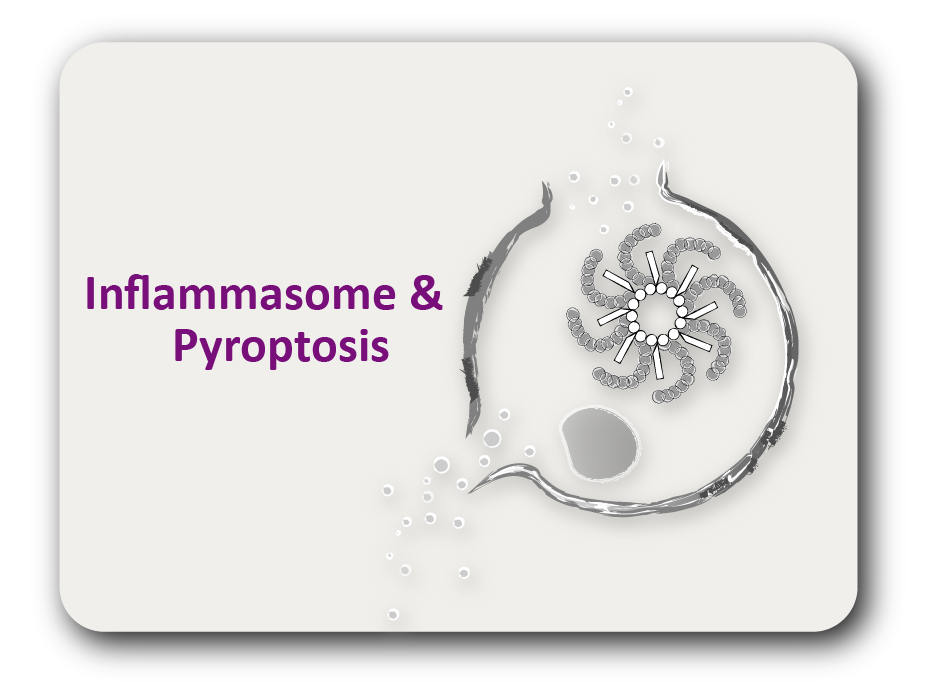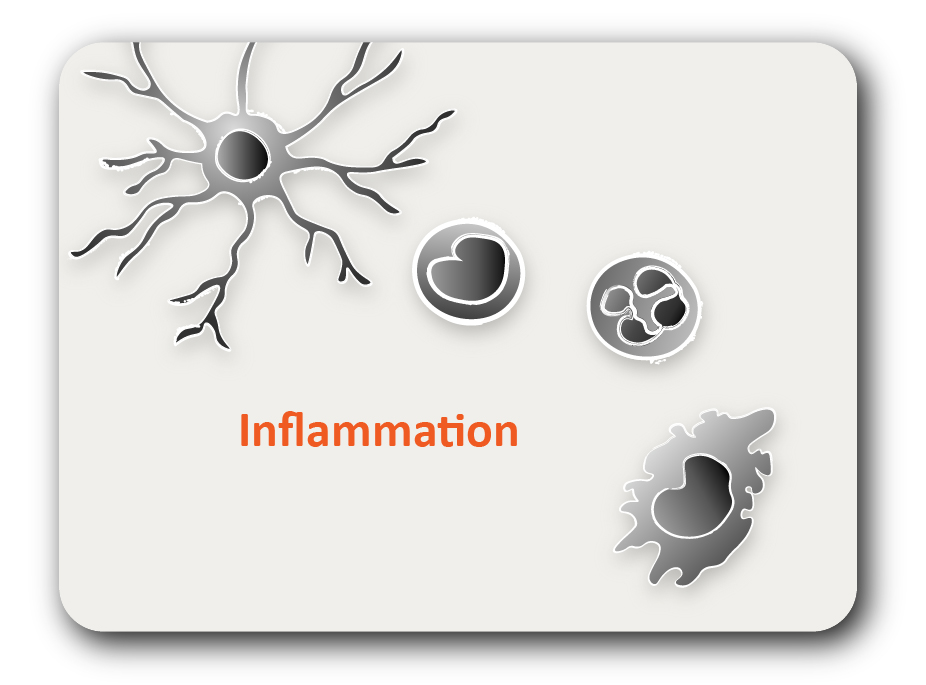ARG51568
anti-Bcl 2 phospho (Ser70) antibody
anti-Bcl 2 phospho (Ser70) antibody for IHC-Formalin-fixed paraffin-embedded sections and Human
Cancer antibody; Cell Biology and Cellular Response antibody; Cell Death antibody; Metabolism antibody; Signaling Transduction antibody; Apoptosis Marker antibody
Overview
| Product Description | Rabbit Polyclonal antibody recognizes Bcl 2 phospho (Ser70) |
|---|---|
| Tested Reactivity | Hu |
| Tested Application | IHC-P |
| Host | Rabbit |
| Clonality | Polyclonal |
| Isotype | IgG |
| Target Name | Bcl 2 |
| Antigen Species | Human |
| Immunogen | Peptide sequence around phosphorylation site of serine 70(R-T-S(p)-P-L) derived from Human Bcl-2. |
| Conjugation | Un-conjugated |
| Alternate Names | Apoptosis regulator Bcl-2; Bcl-2; PPP1R50 |
Application Instructions
| Application Suggestion |
|
||||
|---|---|---|---|---|---|
| Application Note | * The dilutions indicate recommended starting dilutions and the optimal dilutions or concentrations should be determined by the scientist. |
Properties
| Form | Liquid |
|---|---|
| Purification | Antibodies were produced by immunizing rabbits with KLH-conjugated synthetic phosphopeptide. Antibodies were purified by affinity-chromatography using epitope-specific phosphopeptide. In addition, non-phospho specific antibodies were removed by chromatogramphy using non-phosphopeptide. |
| Buffer | PBS (without Mg2+ and Ca2+, pH 7.4), 150mM NaCl, 0.02% Sodium azide and 50% Glycerol. |
| Preservative | 0.02% Sodium azide |
| Stabilizer | 50% Glycerol |
| Concentration | 1 mg/ml |
| Storage Instruction | For continuous use, store undiluted antibody at 2-8°C for up to a week. For long-term storage, aliquot and store at -20°C. Storage in frost free freezers is not recommended. Avoid repeated freeze/thaw cycles. Suggest spin the vial prior to opening. The antibody solution should be gently mixed before use. |
| Note | For laboratory research only, not for drug, diagnostic or other use. |
Bioinformation
| Database Links | |
|---|---|
| Gene Symbol | BCL2 |
| Gene Full Name | B-cell CLL/lymphoma 2 |
| Background | This gene encodes an integral outer mitochondrial membrane protein that blocks the apoptotic death of some cells such as lymphocytes. Constitutive expression of BCL2, such as in the case of translocation of BCL2 to Ig heavy chain locus, is thought to be the cause of follicular lymphoma. Alternative splicing results in multiple transcript variants. [provided by RefSeq, Feb 2016] |
| Function | Suppresses apoptosis in a variety of cell systems including factor-dependent lymphohematopoietic and neural cells. [UniProt] |
| Cellular Localization | Cytoplasm, Endoplasmic reticulum, Membrane, Mitochondrion, Mitochondrion outer membrane, Nucleus. [UniProt] |
| Highlight | Related Antibody Duos and Panels: ARG30268 Apoptosis Marker Antibody Duo (Bcl2, Bax) ARG30269 Apoptosis Marker Antibody Duo (Bcl2, Bid) Related products: Bcl-2 antibodies; Bcl-2 Duos / Panels; Anti-Rabbit IgG secondary antibodies; Related news: Lymphoma |
| Research Area | Cancer antibody; Cell Biology and Cellular Response antibody; Cell Death antibody; Metabolism antibody; Signaling Transduction antibody; Apoptosis Marker antibody |
| Calculated MW | 26 kDa |
| PTM | Phosphorylation/dephosphorylation on Ser-70 regulates anti-apoptotic activity. Growth factor-stimulated phosphorylation on Ser-70 by PKC is required for the anti-apoptosis activity and occurs during the G2/M phase of the cell cycle. Phosphorylated by MAPK8/JNK1 at Thr-69, Ser-70 and Ser-87, which stimulates starvation-induced autophag [UniProt] |
Images (1) Click the Picture to Zoom In






